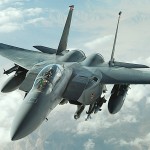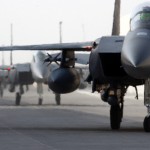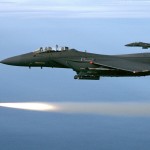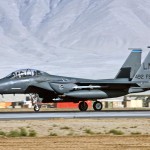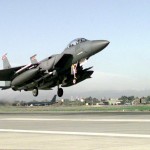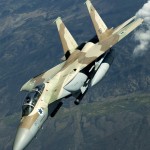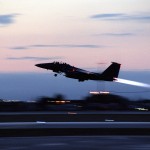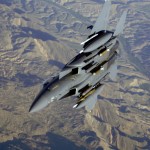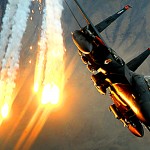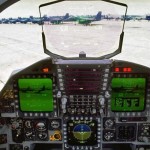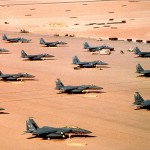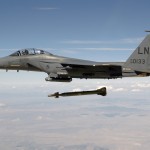
The need for a carrier-capable strike fighter came from the rise of the Soviet Sverdlov-class cruiser. The Buccaneer was not a fancy airplane, but it filled that role nicely.
The Blackburn Buccaneer was later known as the Hawker Siddeley Buccaneer when Blackburn became a part of the Hawker Siddeley group in the early 1960s. It was a sub-sonic, low-level strike fighter that operated into the 1990s, despite a design, avionics, and electronics that were always very 1960s.
The Buccaneer had to get a few lucky breaks to even exist as a military airplane. The cancellation of the supersonic British Aircraft Corporation TSR-2 and the fantastic failure of the General Dynamics F-111K meant that the less advanced (and cheaper) Buccaneer would be given a go.
Early first-generation Buccaneers suffered a series of crashes due to what was seen as a lack of engine power. The S.2 upgrade came with a pair of punchier Rolls-Royce Spey engines.
The South African Air Force emerged as an export partner very early on, and 16 aircraft were delivered under the Buccaneer S.50 name. They were exactly the same was the Buccaneer S.2 except for added armor in the undercarriage, manual-folded wings, better wheel brakes, and the addition of the Bristol Siddeley BS.605 rocket engines that added additional thrust on African battlefields. The plane saw most of its actual combat service in the South African Border War, flying strike sorties against guerrillas in Angola and Namibia. During the Border War, the Buccaneer proved itself a versatile and effective attacker, engaging everything from ships, to tanks, to vehicles. It was also useful in a defensive role, providing close air support and cover missions for South African soldiers.

The Buccaneer never garnered any other export interest. The United States Navy developed the A-6 “Intruder” for its own needs, and Lockheed had engaged in a series of bribes from the late 1950s to the 1970s, which led to several countries purchasing its F-104 “Starfighter” for ground attack use.
In 1980, during Red Flag drills, a British Buccaneer lost one of its wings mid-flight and crashed, killing the crew. The RAF immediately grounded its fleet and determined that metal fatigue was a problem on several Buccaneers. The RAF upgraded 60 of the planes and scraped the rest.
Reaching the end of its lifespan, the Buccaneer finally saw combat for the Crown in 1991 during the first Gulf War. At least 20 roadway bridges in Iraq were successfully attacked by Buccaneers using laser-guided bombs. On Feb. 21, 1991, a pair of Buccaneers even got credited for aircraft kills when they destroyed a pair of Iraqi transport planes on the ground at the Shayka Mazhar airfield.
When the Buccaneer was retired, it was replaced with the V/STOL British Aerospace Sea Harrier in the Royal Navy and the Panavia Tornado in the RAF.
It is believed that three airworthy Buccaneers remain in South Africa, and one is undergoing restoration to airworthy condition in the United Kingdom. About two dozen of the planes are on display, mostly in the United Kingdom.
Specifications
General

Length: 63 ft 5 in
Wingspan: 44 ft
Height: 16 ft 3 in
Empty weight: 30,000 lb
Loaded weight: 62,000 lb
Engine: Two Rolls-Royce Spey Mk 101 turbofans, 11,100 lbf each
Performance
Maximum speed: 667 mpg
Range: 2,300
Ceiling: 40,000 ft
Thrust/weight: 0.36
Armament
Guns: None
Hardpoints: 4 under-wing pylons and one internal rotating bomb bay. Total of 12,000 lbs. of ordinance can be carried including:
- Rockets
- AIM-9 “Sidewinders”
- AS-37 “Martel” air-to-ground missiles
- Sea Eagle air-to-ship missiles
- Iron bombs, laser-guided bombs, and Red Beard or WE.177 tactical nuclear bombs
- Drop tanks for extended range
Photo Gallery
Essential Reading
Online Resources
- BlackburnBuccaneer.co.uk — Hosted at avcollect.com now, this is a great site with info, crew information, and tons of photos.
- Warbird Alley — Great history and some nice photos
- Military Factory — Good background and info

















